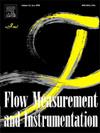A new path in compressor valve design: Optimizing rotary cupped valves for superior flow and efficiency
IF 2.3
3区 工程技术
Q2 ENGINEERING, MECHANICAL
引用次数: 0
Abstract
Traditional optimization methods for reciprocating compressor valves are primarily suited for self-acting valves with elastic components, where parameters such as thrust coefficient and Mach number impose mutual constraints, thereby limiting performance improvements. To address limitation, a novel rotary cupped valve has been proposed, achieving precise control through valve core rotation and reducing dependency on gas and spring forces. To meet the design requirements of the full process control type valve, a new mathematical optimization model was developed, and its performance was quantitatively analyzed and optimized through ANSYS fluid-structure coupling numerical simulations. Experimental results demonstrated that, compared to traditional self-acting plate valve, the novel valve reduces leakage by 5 %, increases the flow coefficient by 8.16 %, expands the effective flow area by 88.64 %, and decreases pressure loss by 40.36 %. The model's calculations are in good agreement with experimental results, with a maximum error within 5 %. Additionally, the full opening time of the novel rotary cupped valve is extended by 66.7 % compared to traditional valves, with an increase in capacity by 6 % and a reduction in power consumption by 0.6 %, demonstrating significant engineering application value and promising prospects for further development and widespread adoption.
压缩机阀门设计的新途径:优化旋转杯状阀,以获得更高的流量和效率
传统的往复式压缩机阀门优化方法主要适用于带有弹性元件的自动阀,推力系数和马赫数等参数相互约束,限制了性能的提高。为了解决这一限制,提出了一种新型旋转杯形阀,通过阀芯旋转实现精确控制,减少对气体和弹簧力的依赖。为满足全过程控制型阀的设计要求,建立了新的数学优化模型,并通过ANSYS流固耦合数值模拟对其性能进行了定量分析和优化。实验结果表明,与传统的自动式板式阀相比,新型阀的泄漏量减少5%,流量系数提高8.16%,有效通流面积扩大88.64%,压力损失降低40.36%。模型计算结果与实验结果吻合较好,最大误差在5%以内。与传统阀门相比,新型旋转杯状阀的全开时间延长66.7%,容量增加6%,功耗降低0.6%,具有重要的工程应用价值,具有进一步开发和广泛采用的前景。
本文章由计算机程序翻译,如有差异,请以英文原文为准。
求助全文
约1分钟内获得全文
求助全文
来源期刊

Flow Measurement and Instrumentation
工程技术-工程:机械
CiteScore
4.30
自引率
13.60%
发文量
123
审稿时长
6 months
期刊介绍:
Flow Measurement and Instrumentation is dedicated to disseminating the latest research results on all aspects of flow measurement, in both closed conduits and open channels. The design of flow measurement systems involves a wide variety of multidisciplinary activities including modelling the flow sensor, the fluid flow and the sensor/fluid interactions through the use of computation techniques; the development of advanced transducer systems and their associated signal processing and the laboratory and field assessment of the overall system under ideal and disturbed conditions.
FMI is the essential forum for critical information exchange, and contributions are particularly encouraged in the following areas of interest:
Modelling: the application of mathematical and computational modelling to the interaction of fluid dynamics with flowmeters, including flowmeter behaviour, improved flowmeter design and installation problems. Application of CAD/CAE techniques to flowmeter modelling are eligible.
Design and development: the detailed design of the flowmeter head and/or signal processing aspects of novel flowmeters. Emphasis is given to papers identifying new sensor configurations, multisensor flow measurement systems, non-intrusive flow metering techniques and the application of microelectronic techniques in smart or intelligent systems.
Calibration techniques: including descriptions of new or existing calibration facilities and techniques, calibration data from different flowmeter types, and calibration intercomparison data from different laboratories.
Installation effect data: dealing with the effects of non-ideal flow conditions on flowmeters. Papers combining a theoretical understanding of flowmeter behaviour with experimental work are particularly welcome.
 求助内容:
求助内容: 应助结果提醒方式:
应助结果提醒方式:


